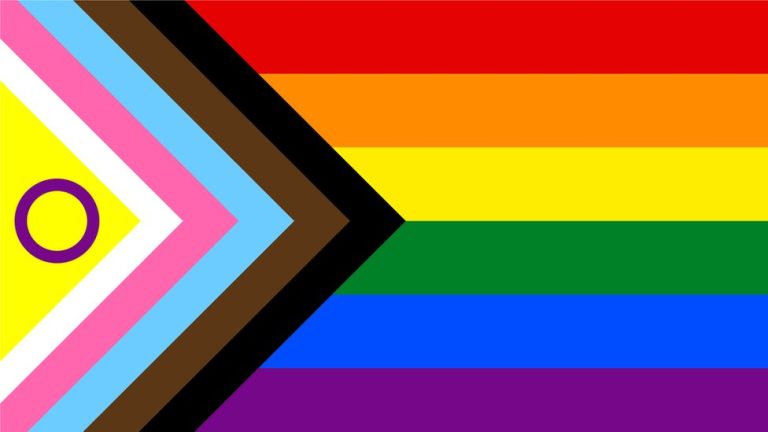Recently the question has been raised within the city of Republic: What spaces are unsafe for the LGBTQ+ community? The answer is simple yet complex and to get there it’s important to first look at what safety means.
Basic human rights are outlined in the Declaration of Human Rights, which indicates that these rights are universal, inherent and inalienable and cannot be taken away. Basic human rights include freedom of thought, conscience and religion and include the right to live free from discrimination based on nationality, sex or religion. These rights are critical for ensuring equity, dignity and respect for all. Safety is also a basic human right. In today’s culture, safety is a paramount topic for marginalized people. Currently in Ferry County, this is especially important in the queer community. It’s critical to discuss types of safety, of which there are many: social, physical, emotional, psychological, financial, spiritual, cyber, environmental and medical. For the purposes of this article, the focus will be on the first four listed.
Social safety ensures that individuals are included and respected within society. It involves protection of people from exploitation, exclusion and discrimination based on social identity, which includes gender identity, race and class.
Physical safety ensures that people are physically safe. This includes protecting them from physical threats, exploitation and acts of violence.
Emotional and psychological safeties will be addressed together. Emotional safety is critical to growing mutual understanding between people. It allows us to express ourselves without fear of judgment, ridicule or rejection. Psychological safety allows for freedom to express our perspectives. To provide for psychological safety, it’s imperative to build an environment that allows for safe expression of thoughts, perceptions and opinions without fear of manipulation, retribution or isolation.
It’s also important to look at statistics within our country in relation to hate crimes against the LGBTQ+ community. According to the Human Rights Campaign, in 2023 and for the first time in the organization’s 40-year history, a National State of Emergency was declared for queer Americans. That status came as a result of over 550 anti-LGBTQ+ bills being introduced into state houses across the nation, 80 of which were signed into law. Yearly FBI reports indicate that anti-queer hate crimes are on the rise and have been for several years. According to the FBI, anti-LGBTQ+ hate crimes rose by 8.6% in 2023 from the prior year. Anti-LGBTQ+ targeted crimes account for one in every five cases of hate crime in the U.S. That’s a staggering number.
Specific to children and adolescents, in 1990 an organization called the Gay and Lesbian Independent School Teacher Network, now GLSEN, was formed to end queer discrimination and bullying in K-12 schools. In 1999, that organization identified that queer youth were nearly absent from national studies of adolescents and in response launched the first National School Climate Survey, which is conducted every two years. Experiences of school children and adolescents touch on the topics of things that contribute to a negative or hostile school climate. Results were deeply shocking and show that the vast majority (83.1%) of queer students experienced in-person assault or harassment based on sexual orientation, gender expression, personal characteristics, gender, religion, race or ethnicity and disabilities. 61.5% of students who experienced harassment and/or assault did not report it because they thought school staff would do nothing to help.
To answer the posed question “What spaces in Republic are unsafe?” Any space is potentially unsafe when there are hate groups that continue to marginalize others. As long as the rights of others are stripped, identities erased and people are oppressed there will be unsafe spaces. It’s the hate, disinformation and hostility toward others that makes a space unsafe. It’s a bit like the wind blowing down the street. It may come across as a gentle breeze but can materialize in gusts. The wind isn’t confined to a particular space, but rather it’s fluid. Any public building may become unsafe if people are protesting, if a portion of the public demands that symbols of hope, safety and peace are removed from display or if someone is banned from using a public bathroom that matches their gender identity, as examples. An unsafe space can be obvious or subtle. Unsafe spaces are often transitory and they exist wherever hate and bigotry exist. The best way to combat unsafe spaces is to advocate for the safety of everyone, accept others and offer equity to all. As long as there is hate, discrimination, the spread of disinformation and marginalization of others, there will be unsafe spaces and those spaces can be anywhere and at any time. To be clear, safe spaces are needed for everyone, which includes every age and absolutely includes children. Unsafe spaces can be inside the home of a child whose parents deny their gender identity or sexuality, in a moving vehicle on a public highway, inside a school building, church, library, restaurant, bar, grocery store, at a stadium—or even inside a hair salon.
Marcella Lewis is assistant secretary of PRIDE of Ferry County, published novelist M. Lauryl Lewis and podcast host of “Social Injustice LET’S TALK ABOUT IT with Marcella.”
In Other News
